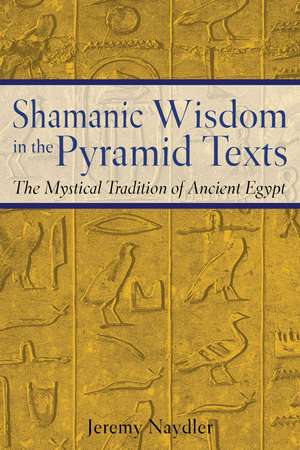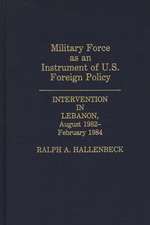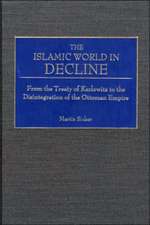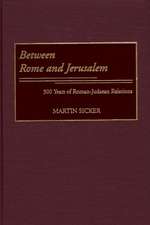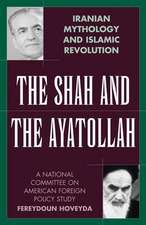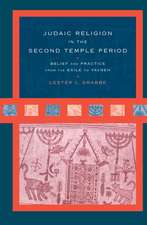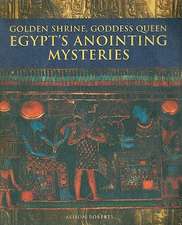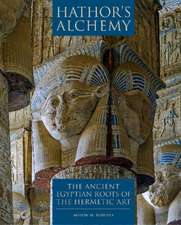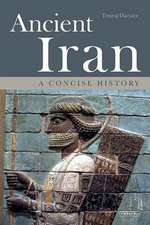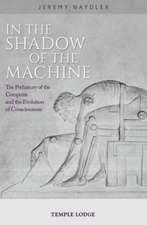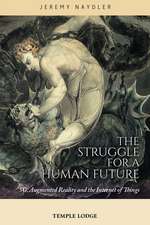Shamanic Wisdom in the Pyramid Texts: The Mystical Tradition of Ancient Egypt
Autor Jeremy Naydleren Limba Engleză Paperback – 9 dec 2004
• Reveals the mystical nature of Egyptian civilization denied by orthodox Egyptologists
• Examines the similarity between the pharaoh’s afterlife voyage and shamanic journeying
• Shows shamanism to be the foundation of the Egyptian mystical tradition
To the Greek philosophers and other peoples of the ancient world, Egypt was regarded as the home of a profound mystical wisdom. While there are many today who still share that view, the consensus of most Egyptologists is that no evidence exists that Egypt possessed any mystical tradition whatsoever. Jeremy Naydler’s radical reinterpretation of the Pyramid Texts--the earliest body of religious literature to have survived from ancient Egypt--places these documents into the ritual context in which they belong.
Until now, the Pyramid Texts have been viewed primarily as royal funerary texts that were used in the liturgy of the dead pharaoh or to aid him in his afterlife journey. This emphasis on funerary interpretation has served only to externalize what were actually experiences of the living, not the dead, king. In order to understand the character and significance of the extreme psychological states the pharaoh experienced--states often involving perilous encounters with alternate realities--we need to approach them as spiritual and religious phenomena that reveal the extraordinary possibilities of human consciousness. It is the shamanic spiritual tradition, argues Naydler, that is the undercurrent of the Pyramid Texts and that holds the key to understanding both the true nature of these experiences and the basis of ancient Egyptian mysticism.
Preț: 106.27 lei
Nou
Puncte Express: 159
Preț estimativ în valută:
20.34€ • 22.10$ • 17.10£
20.34€ • 22.10$ • 17.10£
Carte disponibilă
Livrare economică 04-16 aprilie
Preluare comenzi: 021 569.72.76
Specificații
ISBN-13: 9780892817559
ISBN-10: 0892817550
Pagini: 480
Ilustrații: 135 b&w illustrations
Dimensiuni: 152 x 229 x 30 mm
Greutate: 0.66 kg
Ediția:Original
Editura: Inner Traditions/Bear & Company
Colecția Inner Traditions
Locul publicării:United States
ISBN-10: 0892817550
Pagini: 480
Ilustrații: 135 b&w illustrations
Dimensiuni: 152 x 229 x 30 mm
Greutate: 0.66 kg
Ediția:Original
Editura: Inner Traditions/Bear & Company
Colecția Inner Traditions
Locul publicării:United States
Notă biografică
Jeremy Naydler, is a philosopher who has for many years been interested in the religious life of ancient cultures, receiving his doctorate in religious studies at the University of Kent, Canterbury. He is the author of Temple of the Cosmos: The Ancient Egyptian Experience of the Sacred and Goethe on Science. He lives in Oxford, England.
Extras
Chapter 6
The Pyramid of Unas
Location of the Texts
The walls of the pyramid of Unas are inscribed with 228 Utterances. The Utterances are the organic basis of the Pyramid Texts. The texts are to be found in the sarcophagus chamber, the antechamber, the passage between the two chambers and at the end of the entrance corridor nearest to the antechamber. Unlike a modern printed book, which can be read more or less anywhere on the planet, the Pyramid Texts are wedded both to the chambers and to the walls on which they are inscribed. A north wall sarcophagus chamber text could not be transposed to the east wall of the antechamber without losing a whole dimension of significance. The texts that a wall hosts derive an important dimension of meaning from the chamber that they are in and from the orientation of the wall on which they are inscribed. Furthermore, between north and south wall texts, and between west and east wall texts, there exists a powerful dynamic, and the same thing goes for other walls: texts on one wall will often relate in significant ways to texts on walls opposite, adjacent to or even on the reverse side of them, as we shall see.
The Sarcophagus Chamber Texts--South Wall
(Utts 213-219)
(1) Utt 213: Departing Alive
At the western end of the south wall, nearest to the sarcophagus, the priest addresses Unas with these words:
“O Unas, you have not departed dead,
you have departed alive
to sit upon the throne of Osiris.”
As we have seen in Chapter 3, this statement is usually interpreted as a pious denial of the reality of the king’s death. However, not only is the king said to be sitting on the throne of Osiris, he is also said to be grasping hold of a scepter in either hand.37 The Utterance clearly implies a kingship ritual, quite possibly a coronation ceremony, celebrated by the living king.
This ceremony involving the throne of Osiris and the grasping of scepters is said to enable the king to give orders on the one hand to “he living,” and on the other hand to “hose whose seats are hidden,” i.e., the dead. The contrast here between the living and the dead is so clearly stated that it would seem perverse to interpret the word “living” as meaning anything other than what the sentence suggests: namely, the living as opposed to the invisible dead, “whose seats are hidden.”38 Since the ability to give orders implies that the king is in some sense “present” in the domain in which his orders are given, we may assume that there is an inner, or mystical, event that lies behind the king’s taking up the throne of Osiris, and the extension of his authority into the realm of the dead. This mystical event must surely be what is referred to in the sentence that appears at the beginning of the Utterance:
“O Unas, you have not departed dead,
you have departed alive.”
If this were any normal departure, there would be no reason to state so explicitly that the king was departing alive and not dead. It would seem that the destination of the king is the realm of the dead, but he is journeying into it alive.
Journeys into the realm of the dead by the living form part of a long and universal tradition, attested in a great many cultures all over the world. What is implied in such journeys is that the soul is capable of separating itself from the physical body, and “traveling” independently of it. The experience of becoming aware of oneself in a consciousness independent of the physical body--what we would today call an “out-of-body experience”--is the first step in the process of cosmic ascent referred to in Platonic, Neoplatonic, and Hermetic mystical writings. It is also well attested in shamanism. Eliade has pointed out that one of the characteristics of shamans is that they
are able, here on earth and as often as they wish, to accomplish “coming out of the body,” that is, the death that alone has power to transform the rest of mankind into “birds”; shamans and sorcerers can enjoy the condition of “souls,” of “discarnate beings,” which is accessible to the profane only when they die.
Eliade’s reference to the soul’s bird-like condition in the out-of-body state is peculiarly apt for, as we shall see, in the very next Utterance, Unas is transformed into a falcon.
Before this occurs, however, the physical body of Unas must be protected. This is achieved through a sevenfold identification of its different parts (arms, shoulders, belly, etc.) with the god Atum, with the exception of Unas’s face, which is identified with Anubis. Significantly, the Utterance ends with a reference to the king having “encircled” the realms of Horus and Seth. “Encircling” was a very ancient magical ritual, attested from archaic times to the Ptolemaic and Roman periods. A ritual circumambulation of both fertile land (the realm of Horus) and desert (the realm of Seth) was an integral component of coronation rites, and was repeated during the Sed festival.
This Utterance concerning the “departure” of Unas therefore has both ritual and mystical elements. The ritual elements can be seen first in the reference to an enthronement ceremony in which the king’s authority over the realm of Osiris is confirmed, second in the protection ritual, and third in the ritual circumambulation that the king enacted in order to secure his power over the realms of Horus and Seth. The main experiential counterpoint to these rituals must have involved the projection of the king’s consciousness into the realm of the dead. In shamanic terms, his soul journeys beyond the confines of the physical world.
The Pyramid of Unas
Location of the Texts
The walls of the pyramid of Unas are inscribed with 228 Utterances. The Utterances are the organic basis of the Pyramid Texts. The texts are to be found in the sarcophagus chamber, the antechamber, the passage between the two chambers and at the end of the entrance corridor nearest to the antechamber. Unlike a modern printed book, which can be read more or less anywhere on the planet, the Pyramid Texts are wedded both to the chambers and to the walls on which they are inscribed. A north wall sarcophagus chamber text could not be transposed to the east wall of the antechamber without losing a whole dimension of significance. The texts that a wall hosts derive an important dimension of meaning from the chamber that they are in and from the orientation of the wall on which they are inscribed. Furthermore, between north and south wall texts, and between west and east wall texts, there exists a powerful dynamic, and the same thing goes for other walls: texts on one wall will often relate in significant ways to texts on walls opposite, adjacent to or even on the reverse side of them, as we shall see.
The Sarcophagus Chamber Texts--South Wall
(Utts 213-219)
(1) Utt 213: Departing Alive
At the western end of the south wall, nearest to the sarcophagus, the priest addresses Unas with these words:
“O Unas, you have not departed dead,
you have departed alive
to sit upon the throne of Osiris.”
As we have seen in Chapter 3, this statement is usually interpreted as a pious denial of the reality of the king’s death. However, not only is the king said to be sitting on the throne of Osiris, he is also said to be grasping hold of a scepter in either hand.37 The Utterance clearly implies a kingship ritual, quite possibly a coronation ceremony, celebrated by the living king.
This ceremony involving the throne of Osiris and the grasping of scepters is said to enable the king to give orders on the one hand to “he living,” and on the other hand to “hose whose seats are hidden,” i.e., the dead. The contrast here between the living and the dead is so clearly stated that it would seem perverse to interpret the word “living” as meaning anything other than what the sentence suggests: namely, the living as opposed to the invisible dead, “whose seats are hidden.”38 Since the ability to give orders implies that the king is in some sense “present” in the domain in which his orders are given, we may assume that there is an inner, or mystical, event that lies behind the king’s taking up the throne of Osiris, and the extension of his authority into the realm of the dead. This mystical event must surely be what is referred to in the sentence that appears at the beginning of the Utterance:
“O Unas, you have not departed dead,
you have departed alive.”
If this were any normal departure, there would be no reason to state so explicitly that the king was departing alive and not dead. It would seem that the destination of the king is the realm of the dead, but he is journeying into it alive.
Journeys into the realm of the dead by the living form part of a long and universal tradition, attested in a great many cultures all over the world. What is implied in such journeys is that the soul is capable of separating itself from the physical body, and “traveling” independently of it. The experience of becoming aware of oneself in a consciousness independent of the physical body--what we would today call an “out-of-body experience”--is the first step in the process of cosmic ascent referred to in Platonic, Neoplatonic, and Hermetic mystical writings. It is also well attested in shamanism. Eliade has pointed out that one of the characteristics of shamans is that they
are able, here on earth and as often as they wish, to accomplish “coming out of the body,” that is, the death that alone has power to transform the rest of mankind into “birds”; shamans and sorcerers can enjoy the condition of “souls,” of “discarnate beings,” which is accessible to the profane only when they die.
Eliade’s reference to the soul’s bird-like condition in the out-of-body state is peculiarly apt for, as we shall see, in the very next Utterance, Unas is transformed into a falcon.
Before this occurs, however, the physical body of Unas must be protected. This is achieved through a sevenfold identification of its different parts (arms, shoulders, belly, etc.) with the god Atum, with the exception of Unas’s face, which is identified with Anubis. Significantly, the Utterance ends with a reference to the king having “encircled” the realms of Horus and Seth. “Encircling” was a very ancient magical ritual, attested from archaic times to the Ptolemaic and Roman periods. A ritual circumambulation of both fertile land (the realm of Horus) and desert (the realm of Seth) was an integral component of coronation rites, and was repeated during the Sed festival.
This Utterance concerning the “departure” of Unas therefore has both ritual and mystical elements. The ritual elements can be seen first in the reference to an enthronement ceremony in which the king’s authority over the realm of Osiris is confirmed, second in the protection ritual, and third in the ritual circumambulation that the king enacted in order to secure his power over the realms of Horus and Seth. The main experiential counterpoint to these rituals must have involved the projection of the king’s consciousness into the realm of the dead. In shamanic terms, his soul journeys beyond the confines of the physical world.
Cuprins
Preface and Acknowledgments
Abbreviations
Part One
Mysticism in Ancient Egypt
1 Introduction: The Encounter with the Sacred
Religious Egypt
Mysticism and Ancient Egypt
A Question of Boundaries
Subjective Engagement
Shamanism in Relation to Ancient Egyptian Religion
The Call to Awakening
2 Egyptology: The Death and Rebirth of Mysticism in Ancient Egypt
Mysticism and the Realm of Death
Egyptology: Mysticism Denied
The Knowledge of the Egyptians
The Idea of Progress
Were the Egyptians Practical Rather Than Mystical?
The Rebirth of Egyptian Mysticism
3 The Mystical versus the Funerary Interpretation of Ancient Egyptian Religion
A Clash of Views
Mysticism and the Experience of Death
The Eleusinian Mysteries and Other Mystery Religions
The Funerary Interpretation of the Osiris Myth
The Mystical Embrace of Osiris and Horus
The Sed Festival
4 The Pyramids as the Locus of Secret Rites
The Living in Relation to the Dead
The Meaning of the Sed Festival
The Sed Festival and the Step Pyramids
Fourth Dynasty Pyramids and the Sed Festival
Fifth and Sixth Dynasty Pyramids and the Sed Festival
The Pyramid Texts and the Sed Festival
5 A Question of Method
Phenomenology and the Ideal of Presuppositionless Inquiry
On Approaching the Phenomena with Empathy
The Challenge to Phenomenology
Standing Reductionism on Its Head
A Question of Motivation
Part Two
The Shamanic Roots of the Pyramid Texts
6 The Pyramid of Unas
The Pyramid Texts
The Pyramid Temples and Causeway of Unas
The Pyramid of Unas
Location of Texts
The Interpretation of the Pyramid Texts
7 The Sarcophagus Chamber Texts
The North-Wall Offering Liturgy
The Twelve South-to-East-Wall Texts (Utts. 213–24)
The Passage between the Chambers
The East Gable (Utts. 204–5, 207, 209, 210–12)
8 The Antechamber Texts
The West Gable (Utts. 247–53)
The Fifteen West-to-South-Wall Texts (Utts. 254–58, 260–63, 267–72)
The Eleven North-Wall Texts (Utts. 302–12)
9 From the Antechamber to the Entrance Corridor
The East Gable (Utts. 273–76)
The Snake Spells (Utts. 277–99 and Utts. 226–43)
The Two Remaining East-Wall Utterances (Utts. 300–301)
The Entrance Corridor (Utts. 313–21)
10 The Recovery of Ancient Egyptian Mysticism
The Features of Ancient Egyptian Mysticism
The Phenomenological Approach to Ancient Egyptian Religion
Ancient Egypt and Western Esotericism
Appendices
1 Summary of Utterances in the Pyramid of Unas
2 List of Utterances in the Five Double-Chamber Pyramids at Saqqara
Notes
Bibliography
Illustration Credits
Index
Recenzii
“Erudite, rigorously developed, impeccably supported, observing all scholarly ground rules, yet revolutionary in its implications. This book should engage serious readers the world over.”
“A splendid melding of fine scholarship and passionate engagement with themes that are vitally important to us today. It is must reading not only for lovers of Egypt, students of shamanism and religion, and modern practitioners of soul travel, but for all of us who hunger for the real history of humanity’s encounters with the more-than-human.”
“A fabulously convincing piece of work.”
“This is an important book for it places our focus for understanding these ancient texts where it should be, upon profound human experience.”
". . . the Pyramid texts are revealed as initiatory texts that give voice to a potent shamanic wisdom, which provides the key to understanding both the true nature of these experiences and the basis of ancient Egyptan mysticism."
“A model of how to engage with religious literature and, still more widely, with the sacred dimension of life. . . . Serves as a mirror to our own consciousness, reflecting back to us objective spiritual realities which have fallen out of contemporary discourse, and waking us up to deeper layers of our own humanity. . . . An essential book for all of us who long to experience the greater possibilities of the human psyche.”
“An invaluable contribution to the dialogue about the mysteries of ancient Egypt.”
“A splendid melding of fine scholarship and passionate engagement with themes that are vitally important to us today. It is must reading not only for lovers of Egypt, students of shamanism and religion, and modern practitioners of soul travel, but for all of us who hunger for the real history of humanity’s encounters with the more-than-human.”
“A fabulously convincing piece of work.”
“This is an important book for it places our focus for understanding these ancient texts where it should be, upon profound human experience.”
". . . the Pyramid texts are revealed as initiatory texts that give voice to a potent shamanic wisdom, which provides the key to understanding both the true nature of these experiences and the basis of ancient Egyptan mysticism."
“A model of how to engage with religious literature and, still more widely, with the sacred dimension of life. . . . Serves as a mirror to our own consciousness, reflecting back to us objective spiritual realities which have fallen out of contemporary discourse, and waking us up to deeper layers of our own humanity. . . . An essential book for all of us who long to experience the greater possibilities of the human psyche.”
“An invaluable contribution to the dialogue about the mysteries of ancient Egypt.”
Descriere
A radical reinterpretation of the Pyramid Texts as shamanic mystical wisdom rather than funerary rituals.
